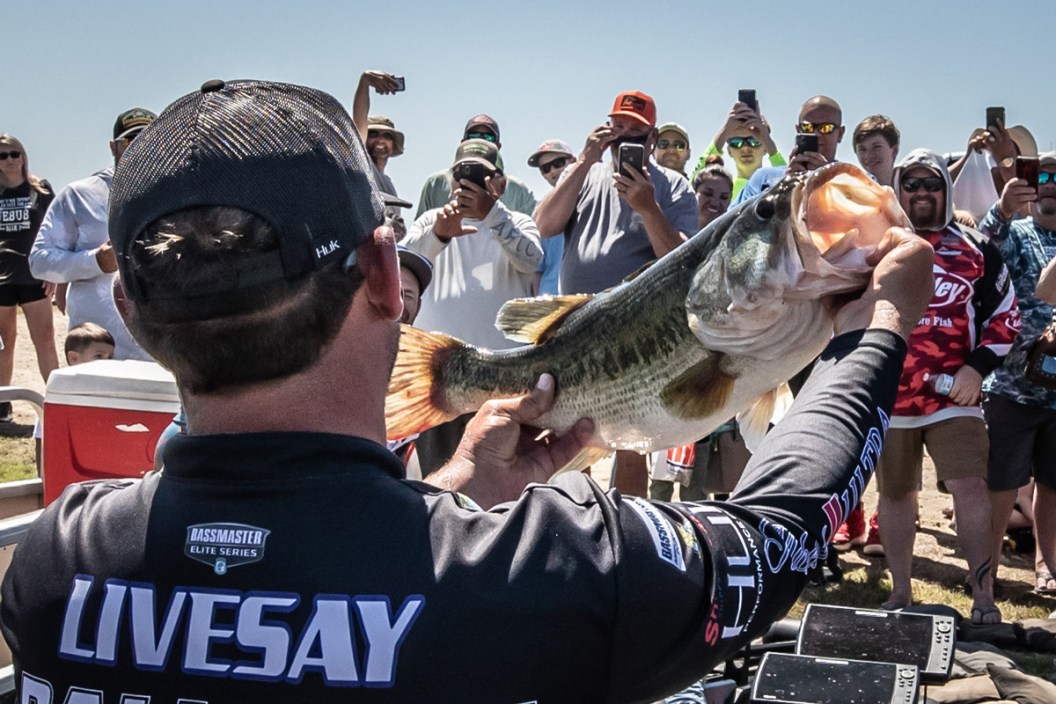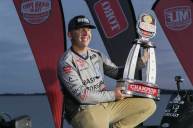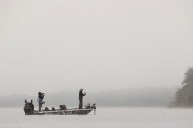Lee Livesay expects a real give-and-take scenario on Lake Fork, as the Bassmaster Elite Series makes its fifth stop at the East Texas powerhouse. Having won last year's event, Livesay said the lake could very well give someone the chance to take home more than a big blue trophy. In fact, Livesay's so optimistic about this event's potential, he's predicting a new four-day weight record will replace the 132-pound, 8-ounce, total that Paul Elias hauled out of Falcon Lake in 2008.
"It's going to fish tough, especially if you get into a bad rotation; but I think if someone has something all to themself, they will break the all-time 4-day weight record for the Elite Series," Livesay said. "I would say a 133-pound total is possible and I'd say you're going to need to catch 27 a day to be in the Top 10. I'm shooting big, but I've seen it like this and I've seen what can happen when it's low. I'm hoping for the perfect storm."
The Look of the Lake
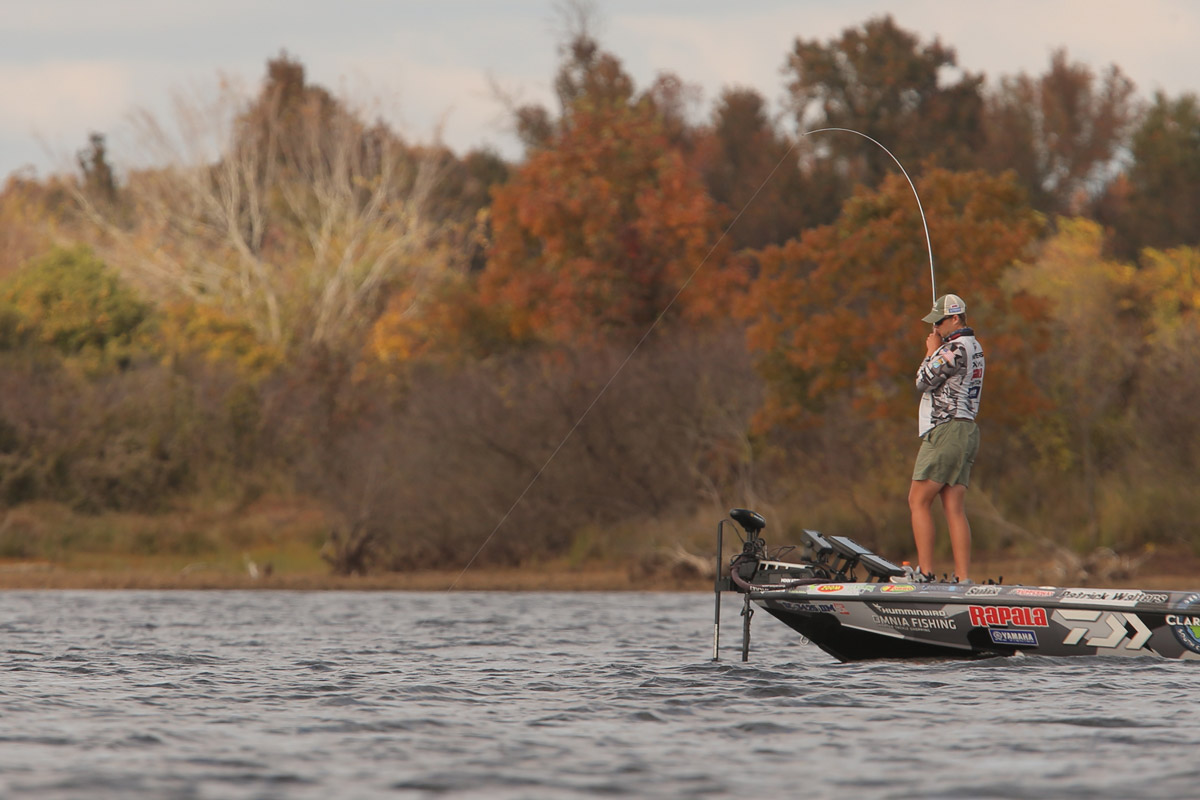
B.A.S.S./Seigo Saito
Why the hype? For starters, Livesay guides on Fork, so he knows the incredible number of quality fish living there. Texas Parks and Wildlife Department manages this Lake Fork Creek impoundment as a trophy fishery and Livesay's 2021 winning total of 104-12—which included an astounding Day 4 total of 42-3 (third-heaviest single-day weight in Bassmaster history)—demonstrated Fork's potential. But this year's different. The water's about 5 1/2 feet low, and that's going to be a game-changer.
According to Jake Norman of the Texas Parks and Wildlife Department's Inland Fisheries Division, the Sabine River Authority started dropping the lake last fall for dam repairs. The water fell to about 6 feet below full pool (403 feet), but recent rains brought it back up about 6 inches.
What It Gives, What it Takes
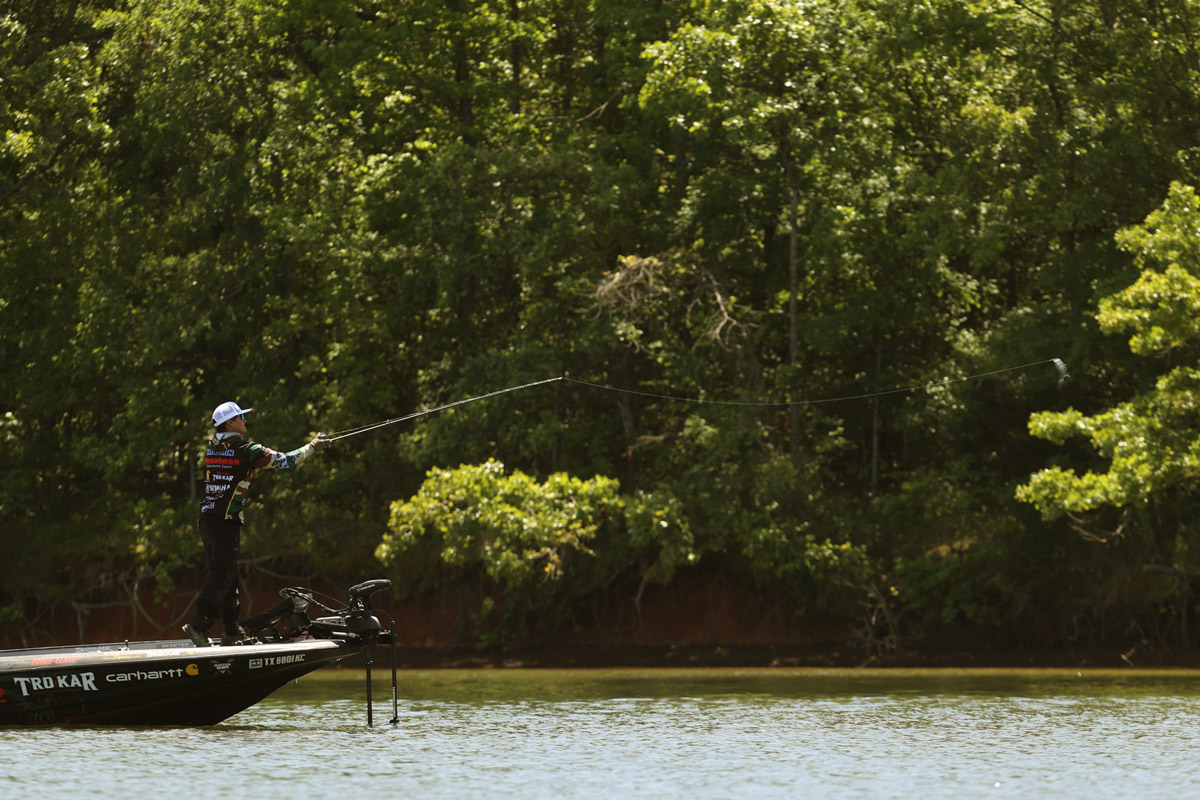
B.A.S.S./Seigo Saito
With a dessert of barren bottom currently encircling Lake Fork, many of the spots Elite anglers fished last year stand high and dry. Less area to fish means more company on each spot.
"It's going to make the lake fish really, really small," Livesay said. "It's gong to take away a lot from the shallow power fishermen."
On the upside, when low water shrinks the available habitat, it congregates the fish into big groups and intensifies feeding competition. So, while the home has fewer rooms, each one is more crowded.
"It's been this low before, actually about 7 feet low for a few years in the 2011-14 timeframe," Livesay said. "It changes everything and it puts a lot of fish in certain little areas."
Norman said the lake's vast fields of standing timber will attract fish, along with humps, long points, old bridges, and road beds. Navigation always matters, but with the water down, Livesay said this year's scenario is a true two-edged sword.
"Low water actually makes navigating the lake easier because you can see all the stumps," Livesay said. "But (obstructions) that are never in play start to show up in spots were you could run (at normal level). All the little shortcuts and creeks with no boat lanes, you'll have stumps everywhere. It'll be pretty treacherous out there. On the main lake and in the boat lanes, you run it better because you can see the stump outlines that are cut. But off the beaten path, it's a ticking time bomb."
Tournament Outlook
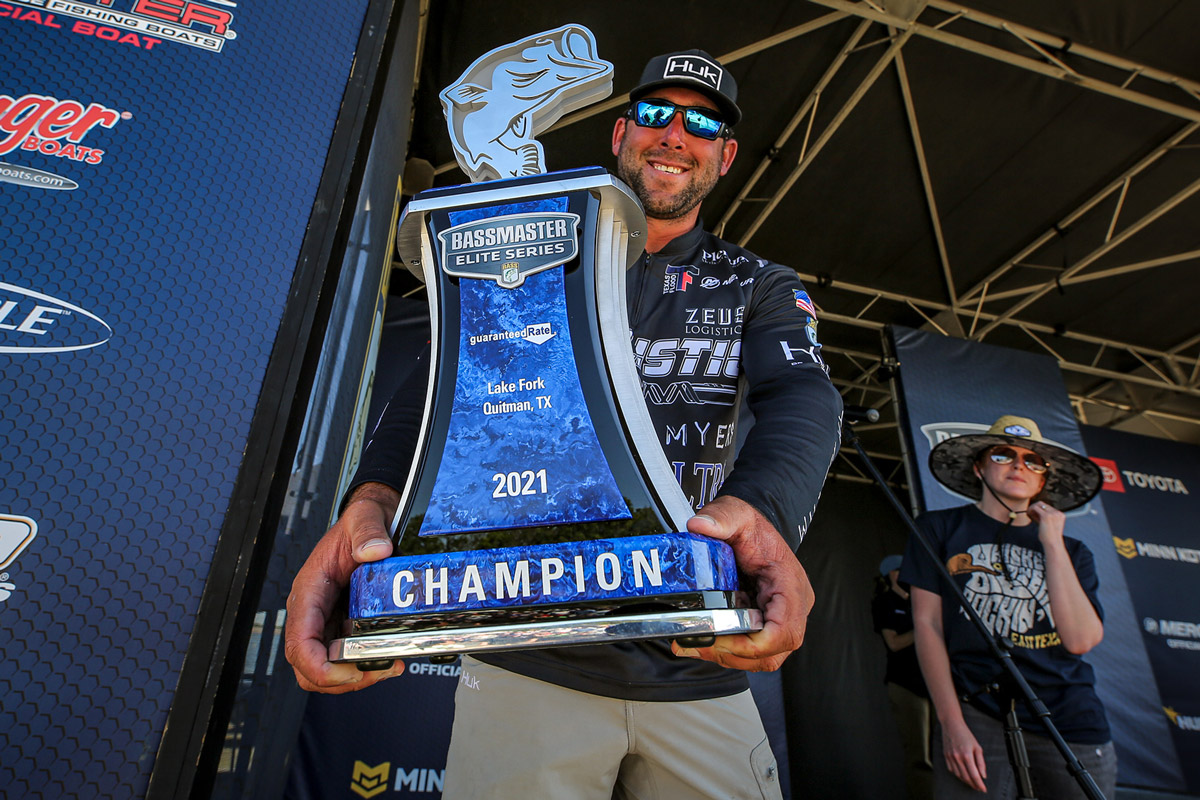
B.A.S.S./James Overstreet
While the entire lake could be in play, Livesay notes that the deeper lower end may offer more opportunity than the shallower upper ends of the major arms. The bass know how to adjust throughout the fishery.
"It's still the circle of life for them; they just find new dinner tables," Livesay said. "You might have a point that you catch them on in (normal conditions), but they might change to the next point down where you never used to catch them."
Jigs, Texas-rigged lizards and creature baits, squarebills, and spinnerbaits will tempt the shallow fish; while topwaters could get the ball rolling early on a shad spawn. Anglers probing the standing Timber with forward-facing sonar typically throw swimbaits and jerkbaits, with football jigs, deep diving crankbaits, and Texas- and Carolina-rigged big worms handling the deep fish. The key, Livesay said, will be fishing the right spots at the right time.
"We're going to have bass spawning, you're going to have shad spawning, you're going to have bream bedding, so you're going to have to have your timing right on all of this," he said. "We're also going to have deep fish showing up, but they're usually better later in the day. Heading into summer, a lot of this stuff is going to be about timing. They'll pull up on certain stuff at certain times of the day and feed. Whoever wins is going to figure out the timing of the spots that they're feeding on."
What's at Stake
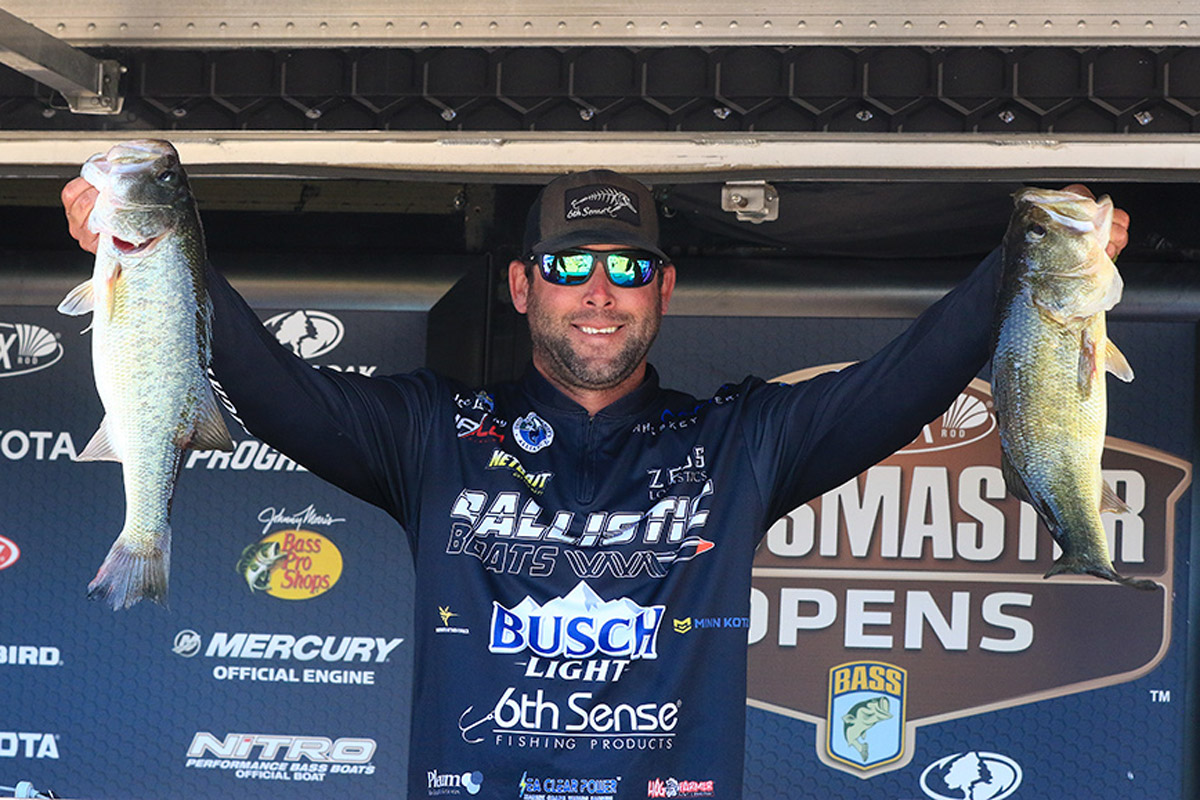
B.A.S.S./James Overstreet
The tournament winner will take home a $100,000 top prize. Bassmaster Elite events also award a daily $1,000 Phoenix Boats Big Bass prize, an overall $1,000 Phoenix Boats Big Bass prize, a $2,000 VMC Monster Bag prize (largest catch of the tournament), and a $1,000 BassTrakk bonus for the angler who most accurately reports his catches throughout the event.
Anglers will also earn points for the $100,000 Angler of the Year prize, while newcomers pursue the $10,000 Falcon Rods Rookie of the Year award.
